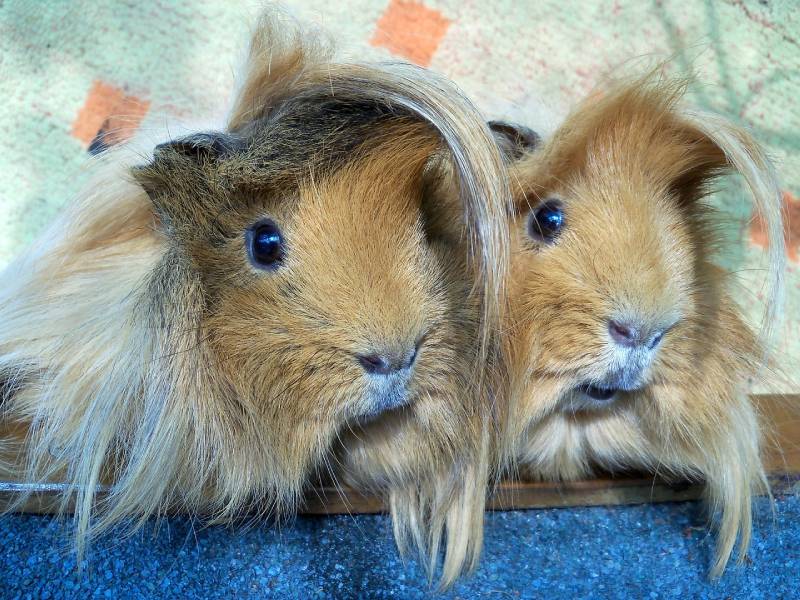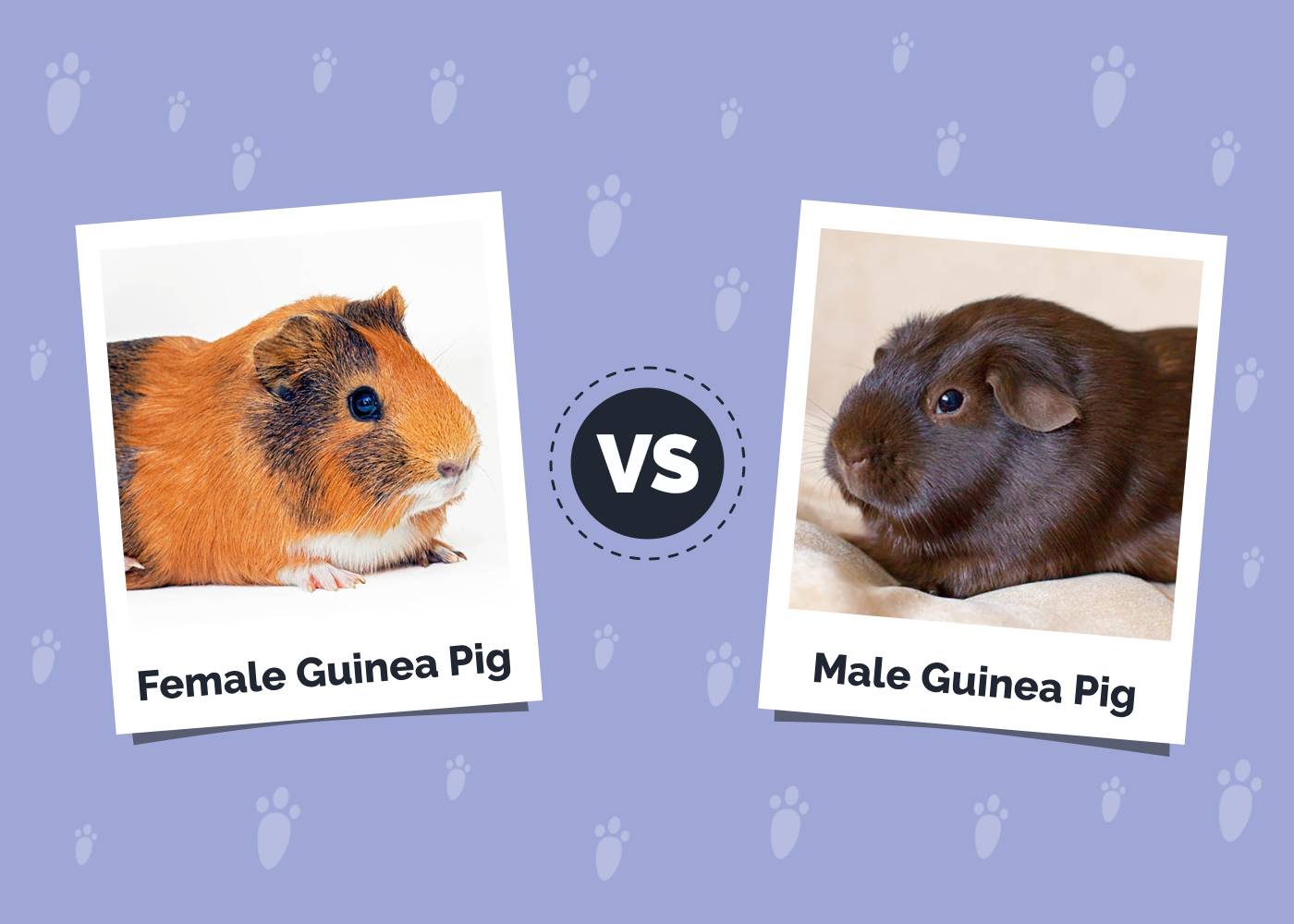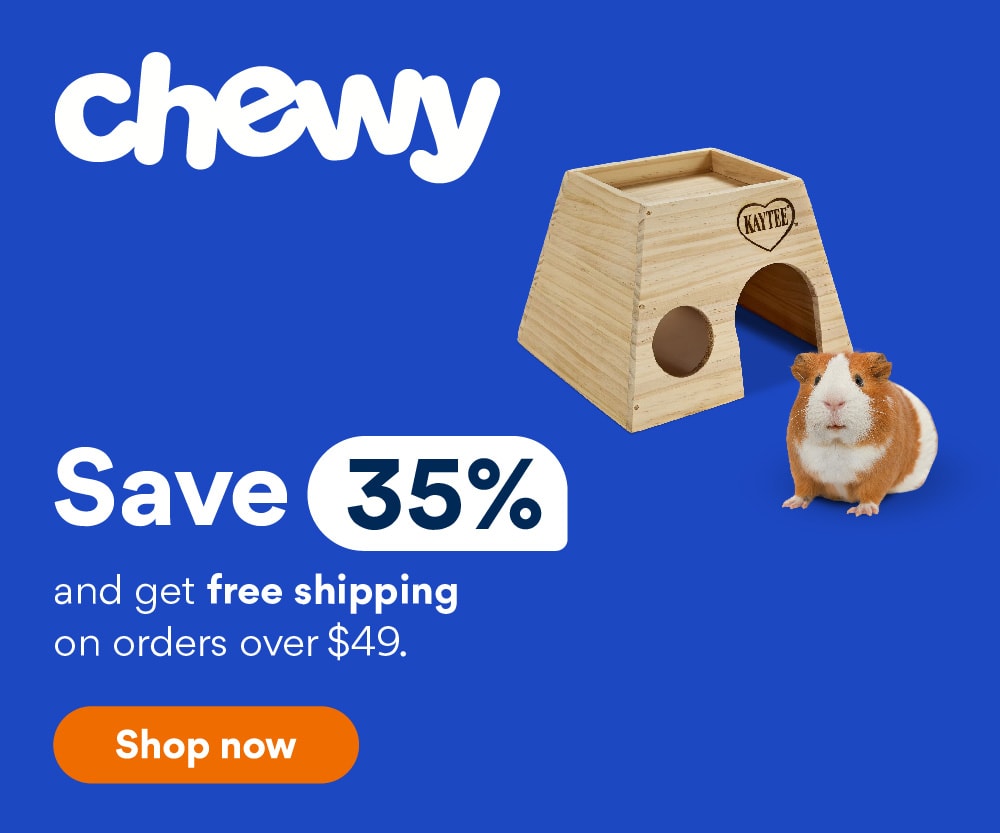How Big Do Guinea Pigs Get? Size & Growth Chart

Updated on
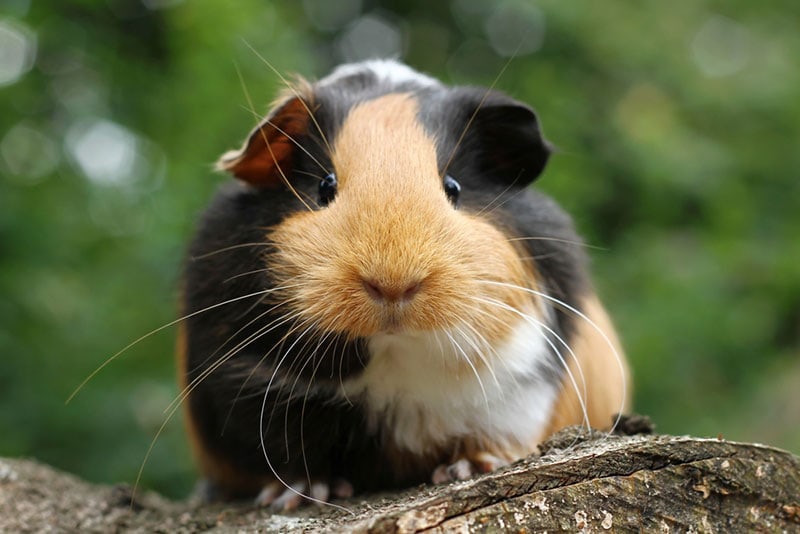
Click to Skip Ahead
If you are considering adopting a young guinea pig, you may be wondering: how big will it get? What is the average size of an adult cavy?
Like most pets, the size of an adult will depend on their breed, sex, and environment, among other factors. Generally, adult guinea pigs are about 5 inches tall and measure 8 to 10 inches in length. The typical weight range is between 0.5–2.6 pounds. However, guinea pigs raised specifically for their meat or show quality guinea pigs may weigh considerably more.
Guinea pigs reach full physical maturity at 16 weeks, after which they stop growing. Understanding the ideal size of an adult allows you to track if your cavy is following a healthy growth pattern.
Read on to find out more about how big guinea pigs get. We will share a detailed growth and weight chart and discuss factors that may affect the size of an individual pet.
Guinea Pig Overview
Guinea pigs are active, so providing appropriate environmental enrichment is crucial. Start by offering foraging opportunities by adding ample amounts of untreated wicker baskets filled with hay within the enclosure.
Guinea pigs are social and love being handled by their human companions. When you place one hand inside the cage, your furry friend will quickly approach you, signifying they want a petting or cuddling session.
Compared to other small rodents, guinea pigs are relatively long-lived. They have an average lifespan of five to seven years. Pets that receive proper care tend to live longer.
Guinea Pig Size and Growth Chart
Guinea pigs can weigh between 0.5–2.6 pounds depending on their breed and sex. They are short, with relatively longer bodies measuring between 8 to 10 inches. Although the maximum size your pet can attain is in part controlled by their genetics, the quality of their life (especially their nutrition) will play a major role in determining whether or not they can attain the size.
Here is a general guinea pig size chart to help you determine whether your furry friend is growing as expected.
| Age | Weight Range |
| 2 to 4 weeks | 0.55 to 0.62 Pounds (250 to 285 grams) |
| 6 to 8 weeks | 0.77 to 1.2 pounds (350 to 550 grams) |
| 10 to 12 weeks | 1.4 to 2 pounds (650 to 950 grams) |
| 14 to 16 weeks | 1.5 to 3 pounds (680 to 1360 grams) |
The table above is merely an estimated guideline and not definitive. Many factors can play a part in your pet’s growth and development; in turn, these can impact their weight. It’s best to seek confirmation from an exotic veterinarian to ascertain if your guinea pig is putting on weight as expected.

When Does a Guinea Pig Stop Growing?
Guinea pigs are physiologically mature at 16 weeks (4 months), after which their growth tends to slow down considerably. Although they may add a few grams before they become full adults at 60 weeks (14 months), the difference is relatively minute. You may not notice significant changes in their size from the periods of about 6 months to 14 months.
Keep in mind that your cavies can mate well before they’re considered fully grown adults. Males are sexually mature and ready to mate at two to three months of age. Females are typically sexually mature at two months. However, both sexes can mature and be fertile at even younger ages. If you decide not to have your pets spayed (females) or castrated (males), you must separate males and females to prevent unwanted pregnancies.
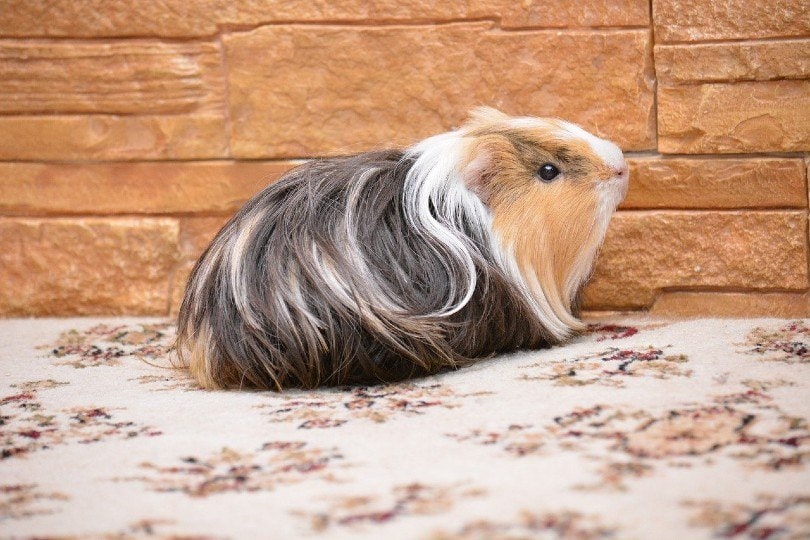
3 Factors Affecting the Size of a Guinea Pig
Numerous aspects play a fundamental role in determining how big cavies get. Here are the three main factors that can significantly impact your pet’s size.
1. Breed/Genetics
One of the primary factors that will influence the adult size of your guinea pig is their breed. For instance, Rex guinea pigs are giants in their world, reaching up to 18 inches in length and weighing a whopping 3 pounds. On the other hand, the American guinea pig is relatively tiny and measures a mere 8 to 9 inches in length with a weight of 1.5 to 2.5 pounds.
In addition to the breed, the genetics of the individual parents also plays an important role in determining the size of their offspring. Each parent contributes half of the genetic material for their offspring.
Male guinea pigs are slightly larger than their female counterparts. Boars (males) of the same age, health, and breed weigh more than sows (females).

2. Environment
The general umbrella term for how well a pet is managed is known as their “environmental” management. This plays a major role in determining how healthy your pets are and how well they grow. It goes without saying that an unhygienic environment with stress will lead to health issues, which, in turn, will lead to poor growth and poor reproductive performance for your pets.
3. Nutrition
Though genetics and sex pre-determine the maximum possible size your pet may attain, nutrition plays a major role in ensuring they get there. Guinea pigs that are deficient in nutrition or not offered an appropriate diet are more vulnerable to illnesses, disease, and poor growth.
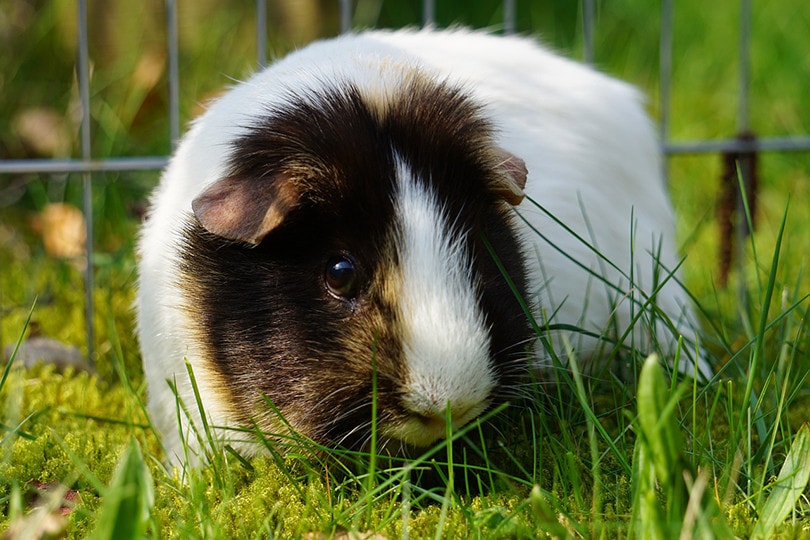
Ideal Diet for Maintaining a Healthy Weight
Guinea pigs, like most rodent pets, love hay. They need an unlimited supply of top-quality hay for good digestive health and to wear down their teeth. In addition, they also need to have access to fresh, clean drinking water at all times.
The ideal daily diet should consist of at least 80% hay. The remaining 20% of the diet should consist of fresh vegetables, fruits, and moderated quantities of dry pellets. The aim of the remaining 20% of the diet should be to ensure that your pet meets their vitamin C requirements on a daily basis.

How to Measure Your Guinea Pig
Measuring guinea pigs can be challenging because they never stop moving. Although they are cuddly, popping them on a scale and ensuring they remain still can be a problem.
Here are a few steps that can make your work easier.
Gather the Necessary Supplies
The first step is to gather the tools you need to measure the weight and length of your cavies. Here is what you need.
- Weighing scale (a baking scale will do)
- Tape measure
- Small box
Weigh the Pet
It is essential to make your piggy feel safe and secure. Place the weighing scale on a flat, steady surface and place your small box on top. Take readings of the box’s weight and gently drop your pet inside it. The container should stop it from hopping off too fast.
Take the readings and deduct the weight of the box. Voila! Now you can tell how much your pet weighs. An alternative to this method is to place the box, and hit “Zero” on your scale to reset the value; this negates the weight of the box and will only weigh your pet once you place them in the container.
It is crucial to keep track of your guinea pig’s weight consistently. Ensure you write down your readings on a spreadsheet and add the data each time you weigh your pet. This way, you can tell if there are any drastic changes in their overall weight.
Measure the Piggy’s Length
The height of guinea pigs is not a vital metric for knowing how big they are. However, it can help to measure their length to ensure they have hit the expected milestone.
To measure your piggy, place them on a flat surface and place your tape measure or ruler next to them and parallel to their body. Take the readings and note them down on your spreadsheet.
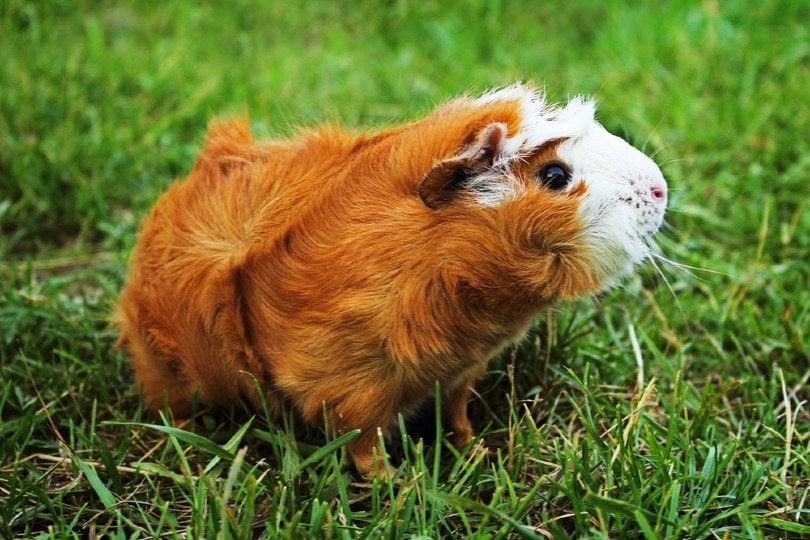
Final Thoughts
Guinea pigs vary in size, and it’s important to know what proportions to expect of your pet based on their breed and sex. Generally, weight and size are indicators of overall health. For instance, you can tell your pet is unwell if they cannot conceal their weight loss.
Likewise, obesity can also be a cause for alarm – however, weight gain in a female might be indicative of pregnancy too. If your pet’s weight doesn’t seem normal, it’s important to seek guidance from your veterinarian to rule out any health issues.
Related Reads:
- How to Make Guinea Pigs Happy (8 Tips & Tricks)
- Do Guinea Pigs Get Periods? Vet-Reviewed Menstrual Cycle Facts & FAQ
Featured Image Credit: Miroslav Hlavko, Shutterstock


